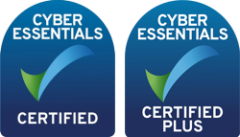In the past weeks, our country, continent and the entire world has been confronted with the Covid-19. We are not only faced with a global pandemic, but also by an infodemic. The term coined by the World Health Organisation describes the enormous flow of messages on social media and publicly available sources, which goes hand-in-hand with the spread of disinformation.
As a result, combatting the evermore challenge for governments and crisis management centres to obtain a clear situational picture and reliable real-time information has become our main priority. Therefore, our team has dedicated significant time to identify public needs during crises. Following numerous consultations with experts, existing clients, scientific articles, news and leading policy developments, we have equipped ourselves with knowledge.
Below we are sharing our learnings from the past couple of weeks for you and your organisation to use to filter online information and manoeuvre the information overload:
1. Define the scope of your information need
The coronavirus touched all of our daily activities, jobs and sectors. Identifying the most valuable information for your organisation requires effort by understanding what exactly you are looking for. Conduct careful research online and offline to define the space in which you can find your information. Ask yourself questions like:
- What topics or geographical area do I want to focus on?
- Do I need fact-based information or sentiments information from the public?
- How do people or media express themselves on my topics of interests?
- Do I need real-time situational analysis or long-term trends analysis?
- Which current valid information sources are at my disposal?
2. Identify credible sources, experts and opinion leaders
Reliable sources include government agencies, health departments as well as national and international public health institutes, such as the World Health Organization | RIVM. Be aware, many accounts utilize impersonation of authoritative figures via fake screenshots, documents, and notifications to announce new cases and/or health advice to confer credibility of spreading disinformation. Be suspicious of important-sounding information if it does not come from a respected source connected to the issue. There are government’s initiatives to tackle this, for example, the WHO Mythbuster and European Parliament “Covid-19 myths” page. Identify the most essential opinion leaders and verified news sources but remain critical of the information value by utilizing fact-checking initiatives to distinguish reliable information from disinformation.
3. Do not limit yourself to one information source
In order to get a comprehensive picture of constantly evolving events, you have to get creative with information streams. Therefore, we suggest discovering and following relevant journalists, stakeholders, live dashboards, databases, blogs, policy updates, Twitter feeds and Facebook pages. Various organizations and websites provide constant updates about the coronavirus. These organizations do not always have a Twitter or Facebook account. RSS feed is an alternative option to remain updated without depending on traditional news outlets. Moreover, many research institutions have provided databases that are continuously updated alongside the mass media such as ACAPS focusing predominantly on the immediate, short and medium-term secondary effects of the COVID-19 pandemic. As suggested previously, remain critical of the quality of non-verified sources. This will be beneficial in creating an all-encompassing information oversight from different sources and perspectives.
4. Start broad, end narrow
It is rather challenging to create a real-time information overview from multiple sources, and constantly monitor it to filter relevant messages. On the one hand, you need to search broadly to not miss any important message. We recommend combining multiple ways that people express themselves (e.g. corona, covid-19, SARS-CoV-2, etc). On the other hand, you need to narrow down millions of messages to only the ones relevant to you. Therefore, it is crucial to filter the available information. Make use of available tooling to assist you in your information journey. Smart algorithms and natural language processing can help you discover the ‘needle-in-the-haystack’. Categorising topics according to your need in a dashboard with sources, news outlets and social media streams will help you sift the most relevant information. Making the search amongst the overload of information online bearable and understandable.
Curious how PublicSonar can help you filter online information?






